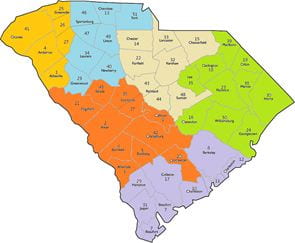How would you like your residential solar photovoltaic system to operate at maximum efficiency, regardless of whether shade hits your solar panels? SJSU Electrical Engineering professor Mohamed Badawy and his students have created a differential power-processing architecture for a partially shaded photovoltaic string that could increase the extracted amount of solar energy by 15-30% compared to conventional systems.
“The overarching purpose,” said Badawy, “is to develop new photovoltaic configurations that can extract as much energy as possible, while using low-cost interfacing systems to convert the harvested energy to usable levels.” This project is made possible by generous support from Fremont-based Delta Electronics (Americas), a global provider of power and thermal management solutions.
Any shade on solar panels leads to a lower amount of extracted solar energy from the system. And worse, when connected panels are exposed to shading conditions in a non-uniform manner, the shading not only affects the shaded panels but it also negatively impacts the output energy of all the panels connected to it. Badawy’s new technology eliminates this problem with a new redesign of differential power processing PV converters.
“We published two papers on it and are currently preparing two journal publications based on the experimental results we got, said Badawy. “The project results showed the system’s ability to increase the energy capture of PV panels by up to 30% under shading conditions while adding less than 10% of capital cost into the PV system.”
Highlights of the new architecture include an increase in PV lifetime, because it uses a ceramic capacitor vs. the older electrolytic capacitor; a modular design; and lower current ripple on both input and output sides.
Because Badawy is also a teacher, he’s kept an eye on the project’s effect on his students. Two students on this project just received their Master’s degrees and two more students are planning to pursue this project as their Master’s research. This project group includes female and Latinx students, a critical step in promoting the renewable energy research area at SJSU while diversifying the student body of SJSU research labs.
“The students were able to work on a practical problem under real pressure to deliver,” he said. “This certainly helped their technical, design and hardware skills to develop. Additionally, the students were always attending SJSU-Delta meetings to present their own work, which helped to develop their professional skills. They also learned how to build partnerships, which is a skill they will always need in their careers.”
The SJSU collaboration is part of Delta’s corporate social responsibility (CSR) program to partner with universities and institutions in the United States to nurture talent capable of developing next-generation renewable energy technologies, an initiative in line with Delta’s corporate mission, “To provide innovative, clean and energy-efficient solutions for a better tomorrow.”
“This experience has proved extremely rewarding for our staff, as we bridge the gap between industry and academia,” said Peter Barbosa, director of Delta’s Milan M. Jovanovic Power Electronics Lab in Raleigh, N.C. “The fresh perspectives we gained are invaluable as we solve some of the energy industry’s biggest challenges.”
